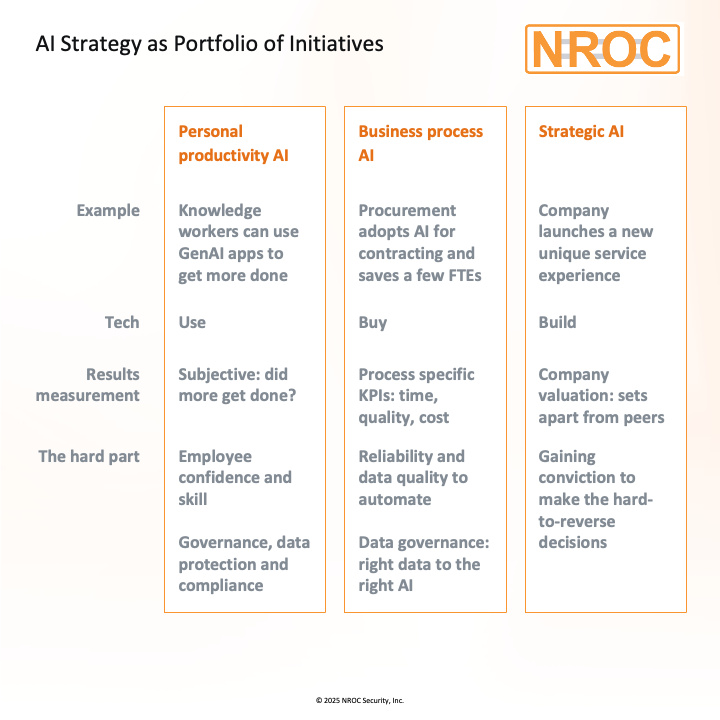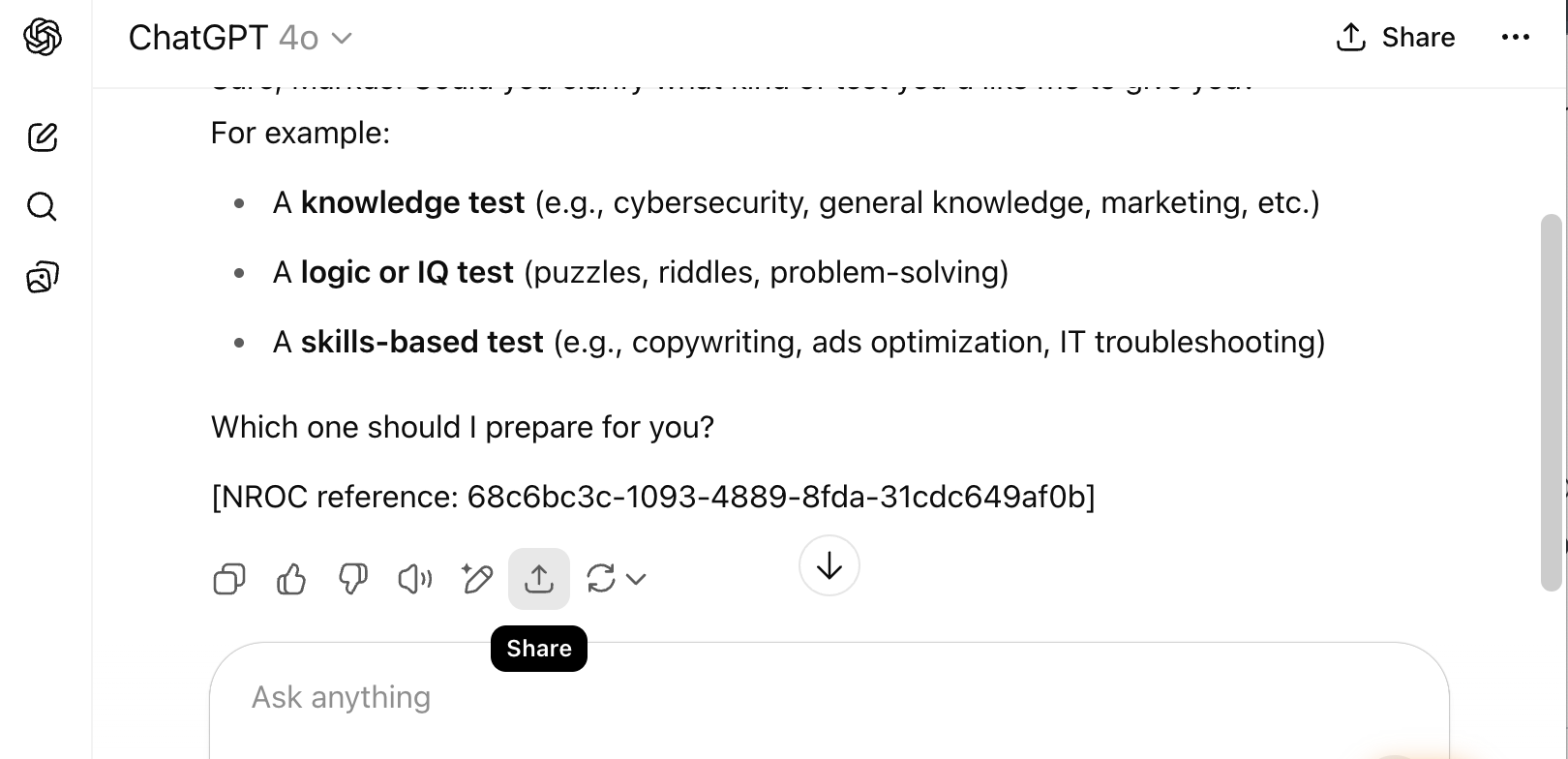AI Strategy as a Portfolio of Initiatives
AI initiatives are quite often governed company-wide, but identifying different characteristics in the initiative is essential to ensure focus to right execution and get improved results.


In most organizations, AI is many initiatives that a working group or committee is overseeing company-wide. More mature organizations distinguish three very different types of initiatives: personal productivity AI, business process AI and strategic AI initiatives. These 3 have actually more differences than commonalities. Clarity of their unique characteristics greatly focuses the execution and improves results. Having a balanced portfolio between all three flavors seem to accelerate learning.

Personal productivity AI is about individual knowledge workers taking their own tech initiatives trying to get more done. In many organizations this has been governed only by some internally published instructions and policies. The rest is left to the individual employees to figure out. ROI is subjective and data protection risks are very tangible. We recommend considering personal productivity as an explicit initiative on its own. The best organizations combine security awareness & prompting training, allow access to a wide set of GenAI thanks to monitoring and guardrails, and sample usage data to identify repetitive tasks, best (and riskiest) users and promote best practices. Most advanced organizations are starting to use the AI monitoring data to quantify the ROI. It requires diligence. A good sales person may have been good already before he or she become skillful with AI.
Business process productivity AI holds a lot of promise. Every imaginable business process has startups and established SaaS vendors reimaging it with AI. These initiatives should be prioritized based on their impact on business process KPIs. ROI from these initiatives is usually expected from an increased degree of automation that accelerates a business process and reduces manual work FTEs. When the personal productivity AI success bar is the lowest – it being entirely AI assisting a human – automation raises the bar significantly. The AI driving the process need to be reliable and the processed data clean enough that a human can be taken off the loop. AI + human in the loop is not economical. Best organizations scout broadly new process/AI innovations but screen very diligently which initiatives to move forward with, and then over-invest in the data cleanup as needed by that process. Old ‘ladder approach’ of “let’s clean our data and then go A”I is not practical. Starting from a very specific process improvement goal and working backwards is the only way to get to the ROI.
Strategic AI has the highest bar of all initiatives. It cannot be purchased ready-made – otherwise it would not be unique to make a difference. The tough part here is to make the hard-to-reverse decisions. If custom AI is meant to transform the company into the cost-leader of the category, and a whole job category is made redundant as a result, there are points of no return before the ROI is ‘in the bank’. If a decision is easily reversible, it’s not strategic anyway. This makes the strategic AI very difficult. It needs to be unique and transformative. It cannot be too narrow a use case, and at the same time it needs to operate with such a high level of dependability that the company can make those hard-to-reverse decisions that eventually yield the benefit.
Are there then synergies between these different types of AI initiatives?
We have seen that organizations that do not prioritize personal productivity AI have less ideas for business process or strategic AI tracks. The broad-based use is important for learning. What’s first done repeatably with ChatGPT may indicate where the easiest wins are for business process AI. Scouting the business process AI opportunities also keep the organization abreast of the technology frontier, and help spot when technologies are ready for an some industry-shaping strategic moves.








